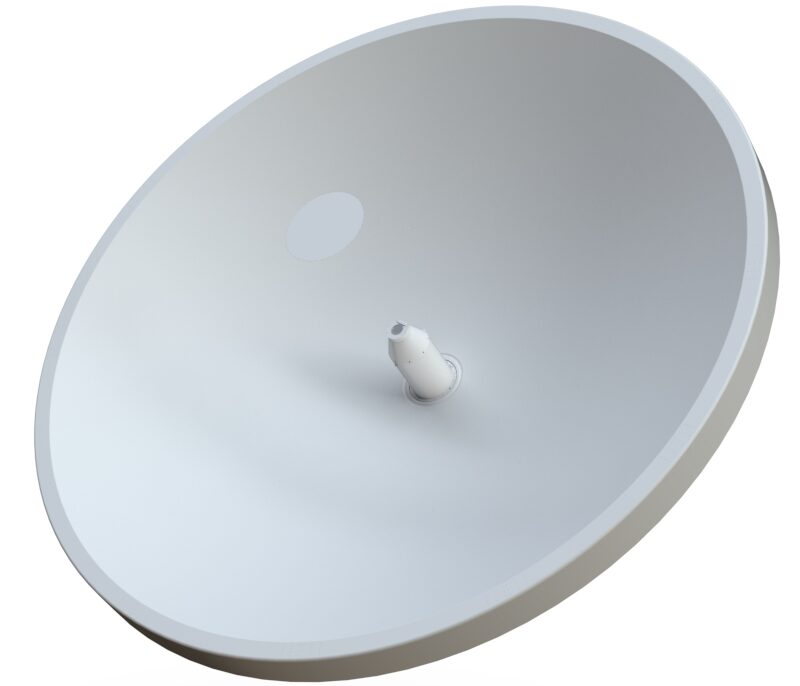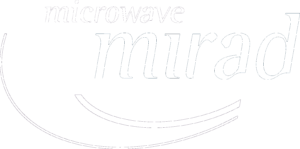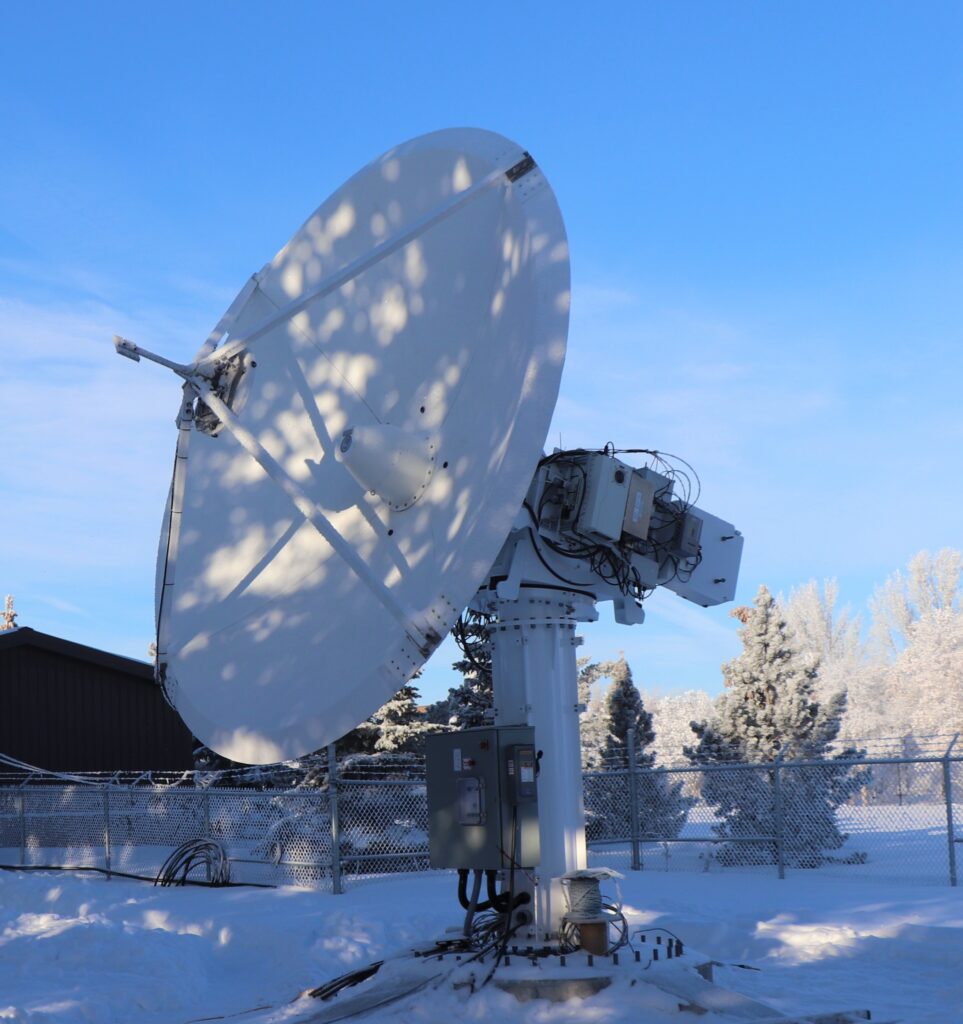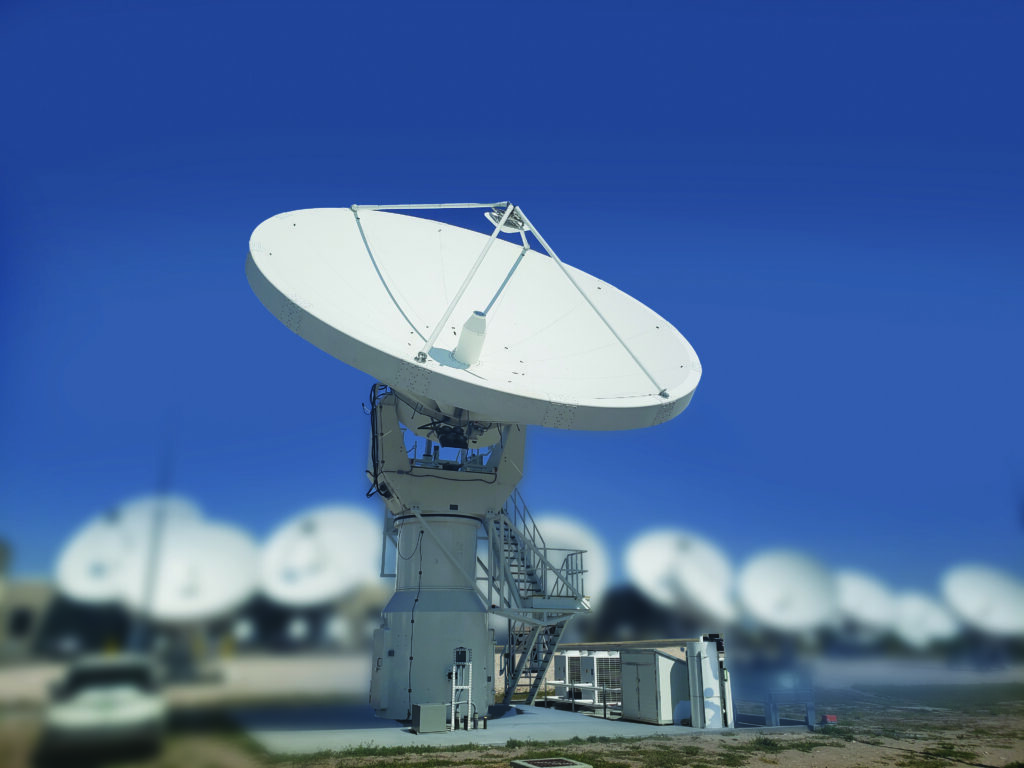After the successful design and project completion of a 6m Q/V-band tracking antenna including a feed prototype, in the years 2017/2018 our customer Calian asked MIRAD to quote for 10 units of a Ka/Q/V-band system designs. The development of the feed system follows the design requirements for a 10m Cassegrain reflector antenna. The 10 antenna systems are suitable for communications the latest high throughput satellites (HTS) to be launched in 2023. This HTS will enable services with download speeds of up to 100 Mbps, the spacecraft is the first system to use Q- and V-band for gateway feeder links to optimize and increase the communication bandwidth to the customers and to relieve the Ka-band.

With the lessons learned from the successful 6m design our engineering team designed a 10m Cassegrain shape that supports frequencies from 27.5 GHz to 52.40 GHz and also provides very well shaped tracking pattern in Q-band (37.50 GHz to 42.50 GHz), allowing precise spacecraft tracking.
Beside the antenna shape optimization and the definition of the primary radiator, the feed horn, our engineering was also responsible for the simulation and the analysis of several wind and gravity load calculations which results loop back in the mechanical design of our customer. Furthermore, the complete antenna gain performance and receive sensitivity G/T was analysed over the frequency band and for several elevations. The final design of the antenna had simulated efficiency values between 89% to 91% for the required Ka-, Q- & V-band frequencies. The antenna and feed horn design goes hand in hand and the overall system has been improved to by horn optimization, ideal placement of the focus points and by shaping the sub- and mainreflector to an optimum.
4m Q/V-band full motion antenna for LEO application and the 10m Ka/Q/V-band antenna installed on a site in the US*.
In addition to optimizing the antenna shape and defining the primary radiator, the feed horn, our engineering was also responsible for the simulation and analysis of various wind and gravity calculations, the results of which are incorporated into our customer’s mechanical design. The overall antenna gain performance and receive sensitivity G/T were analyzed across the frequency band and for different elevations. The final antenna design had simulated efficiency values between 89% and 91% for the required Ka-, Q- and V-band frequencies. The design of the antenna and the feed horn go hand in hand and the overall system was improved by optimizing the horn, the ideal placement of the focal points and the optimal shaping of the sub- and main reflector.
The final fabrication of the antennas was performed by our customer Calian using a very innovative composite approach resulting in a very stiff and lightweight structure with excellent antenna performance parameters. The performance was successfully demonstrated between 2020 to 2022 together with ESA at the prototype station.
Read more…
*Credit: Calian https://www.calian.com/products/antenna-systems/


